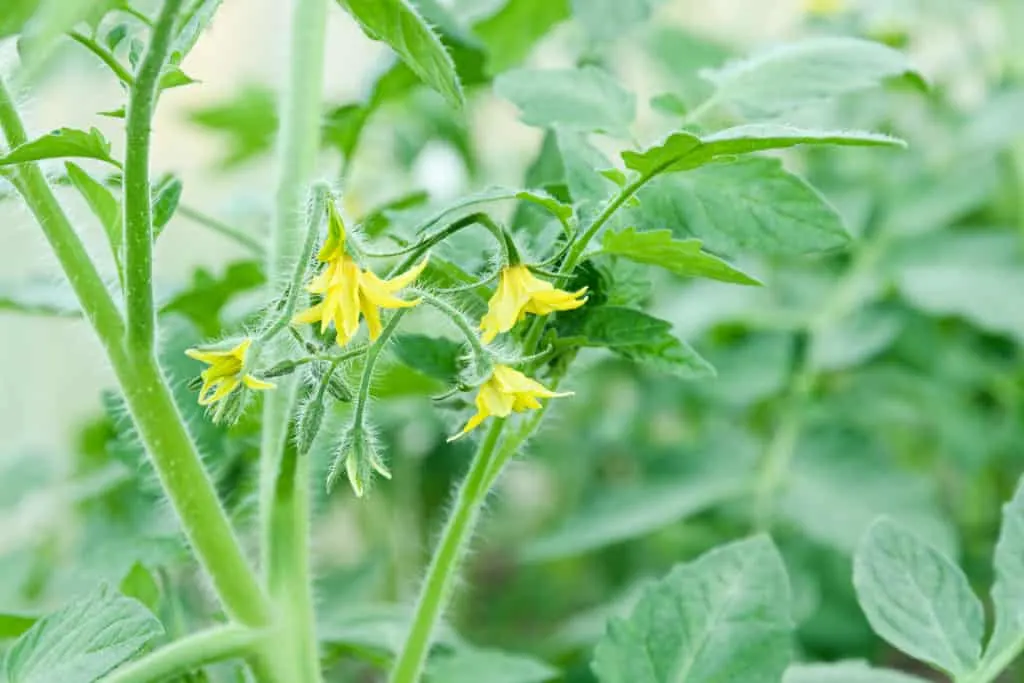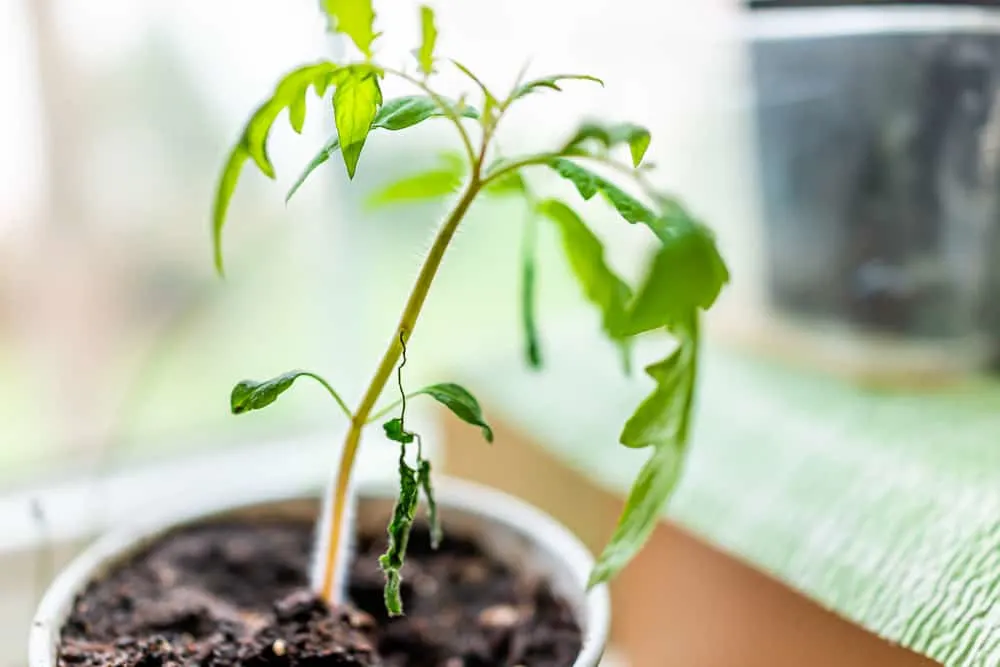
You’ve planted your tomato seeds. Now, the excitement and anticipation of those first sprouts poking their funny little heads out of the soil. Watching the pair of baby leaves emerge and elongate. The true joy of finding the seedlings have made their first true leaves.
And then the disasters begin to strike.
The little fellows aren’t doing much. Or they are weak, spindly, and break way to easily. They have weird colors or covered in white dust or spots. Don’t be discouraged, there are many solutions to tomato problems.
Tomato plants are incredibly resilient. There are a plethora of diseases that affect tomatoes, but luckily, for the home gardener, most can be dealt with using good growing techniques.
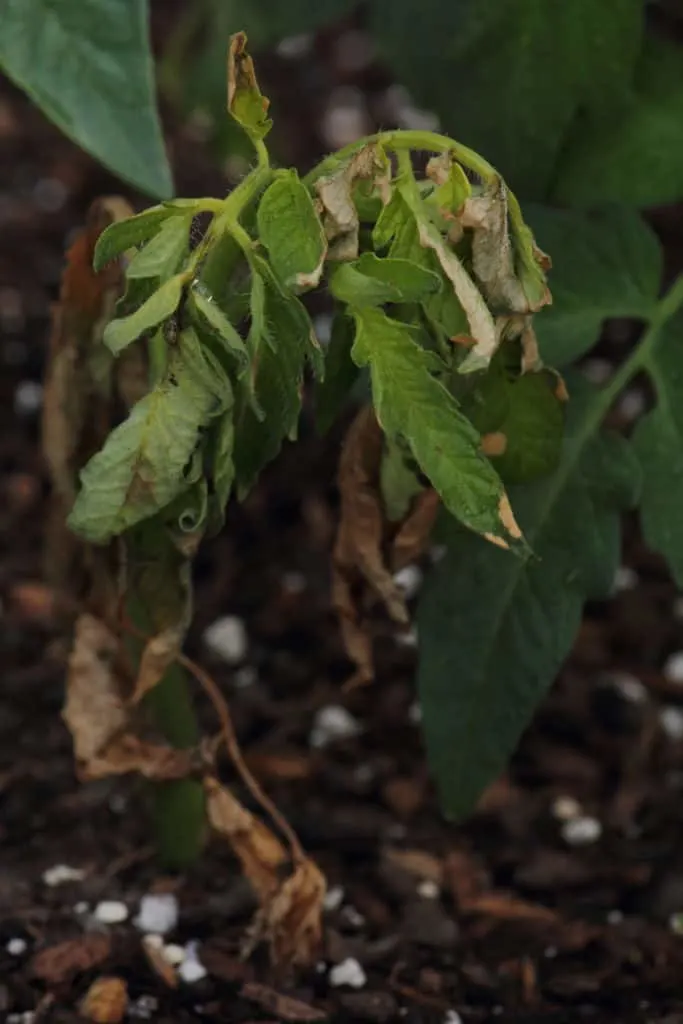
Tomato plants often show more serious disease issues later in life. If there are problems at the seedling stage, they can often overcome issues and become healthy, fruit-bearing adults. If there is a problem though, it is a great idea to find out what the problem is and how to rectify it.
What could these problems be? Let’s look at them one by one to find out what is causing these devastating mishaps, how to prevent them, and how to fix them.
1. Your Tomato Seedlings are Leggy
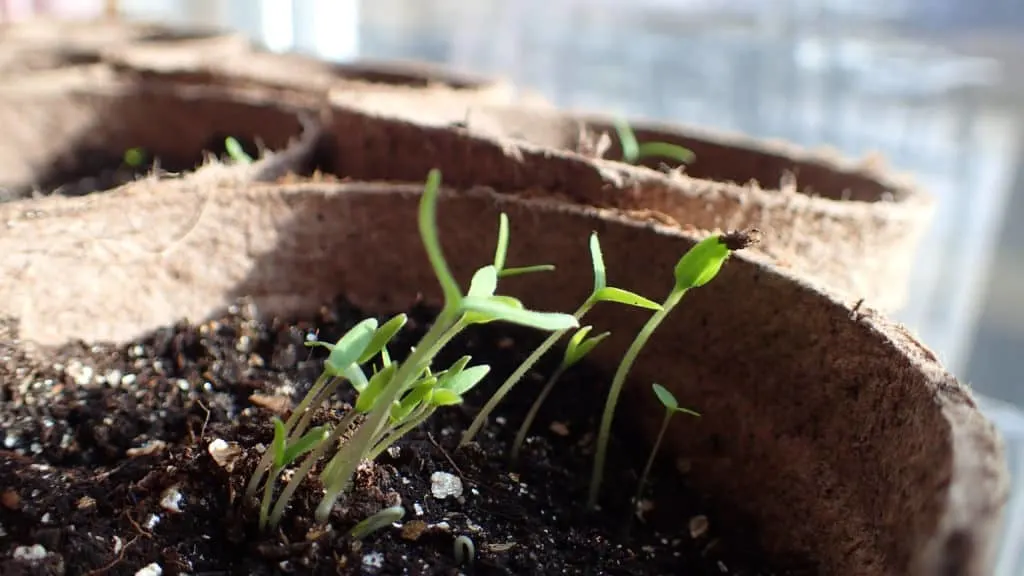
Probable Cause: Plants may not be receiving enough light. They will stretch toward available light sources.
How to Prevent: Ensure 6 to 8 hours of natural light or 12 to 16 hours of artificial light from grow lights.
How to Fix: If you are relying on natural light for your seedlings, is there a better spot for them? Possibly a sunnier window that is south facing. Is it warm enough outside, above 50° F (10° C) to put the seedlings in a protected area where they will get full sun outside? Or, is it possible to supplement with artificial lights?
If you are using artificial lights, are the lights close enough to the seedlings? Using florescent or LED lights are best as they have low-heat output and provide good light spectrum for plant growing. Grow lights can be just 4 inches (10 cm) above the plants, and they can be raised as the plants grow.
2. Your Tomato Seedlings are Turning Yellow
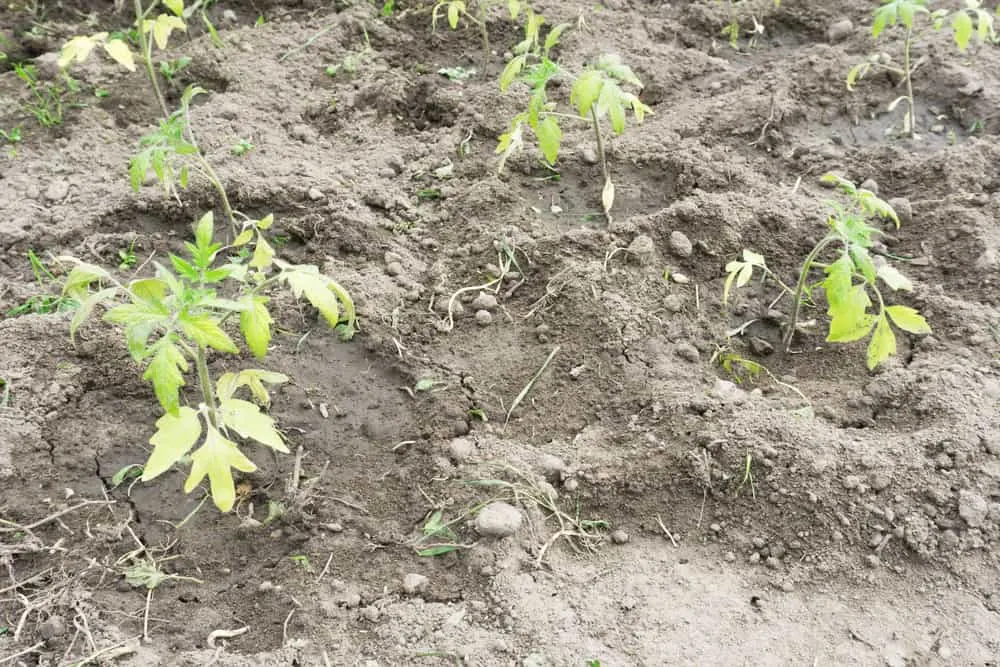
Probable Cause: Seedlings may be in need of more nourishment.
How to Prevent: Keep soil consistently, evenly moist. Without water, plants are not able to soak up the nourishment in the soil.
Use a nutrient-rich potting soil mixture to start your seedlings. Potting soil that contains some well-rotted organic matter, worm castings, or mushroom compost should be more than enough to feed your seedling starts.
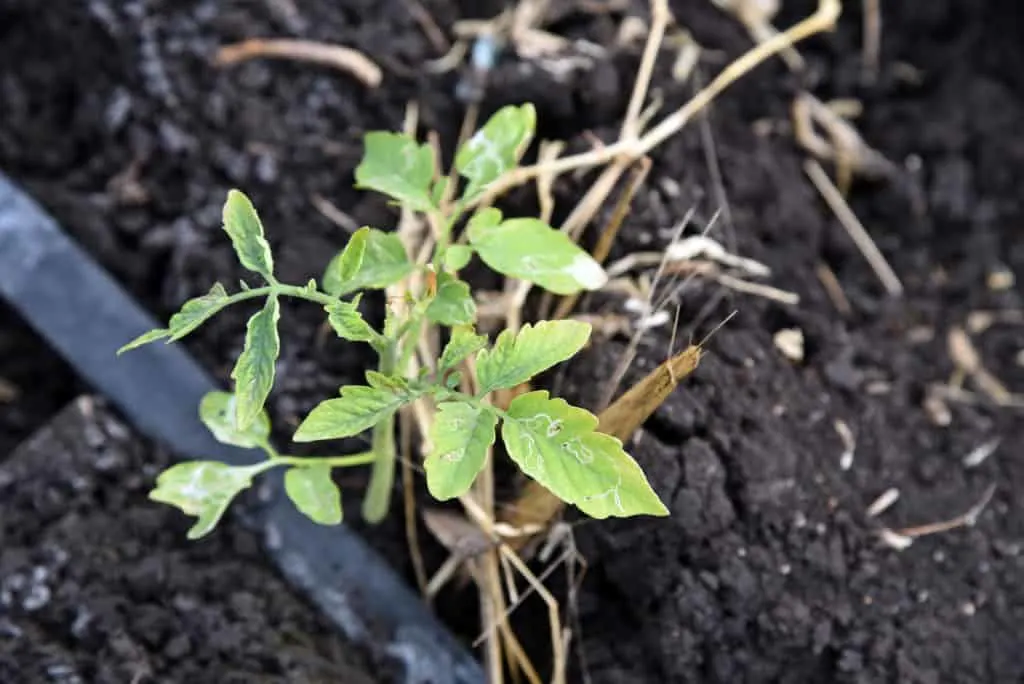
How to Fix: Water well, ensuring adequate drainage. Use a diluted liquid fertilizer, preferably natural or organic, to spray the leaves and soak the soil. The liquid fertilizer could be diluted two to three times as much as you would if using on mature, established plants. If using a homemade compost tea, make sure the compost is very well-rotted to prevent burning the little seedlings.
3. Your Tomato Seedlings are Wilting or Drooping
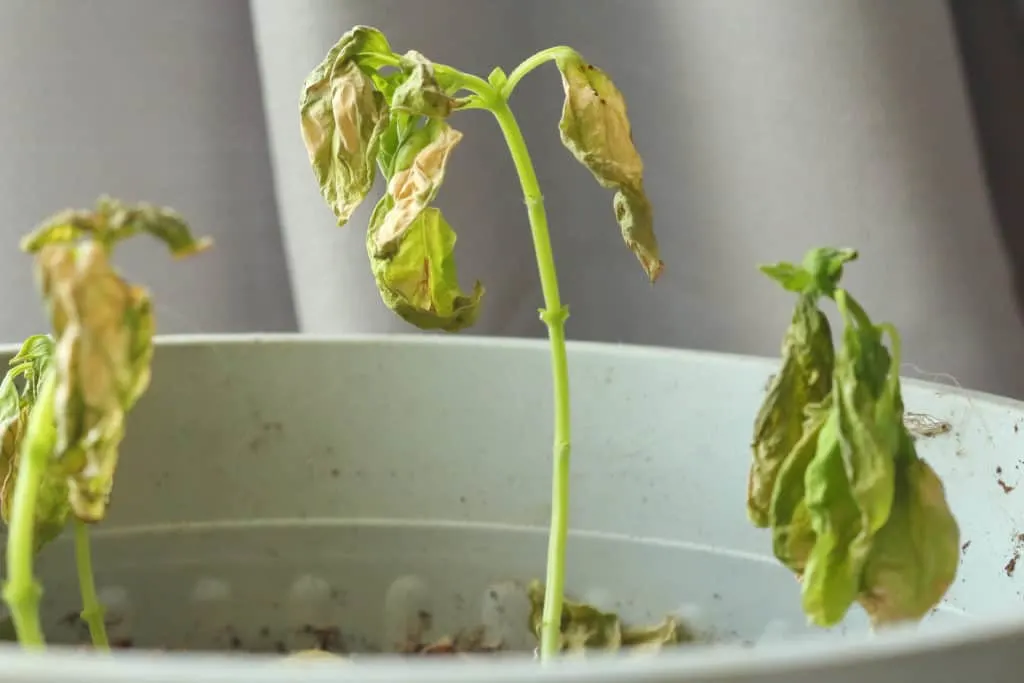
Probable Cause: The tomato seedlings might be receiving too little or too much water.
How to Prevent: Ensure a consistent watering schedule with good drainage. If the soil is holding on to too much moisture and there is no air space in the soil for the roots to breathe, the plant can suffocate and drown. If the soil is drying out too much too often, the little roots dehydrate and lose their ability to soak up water and nutrients.
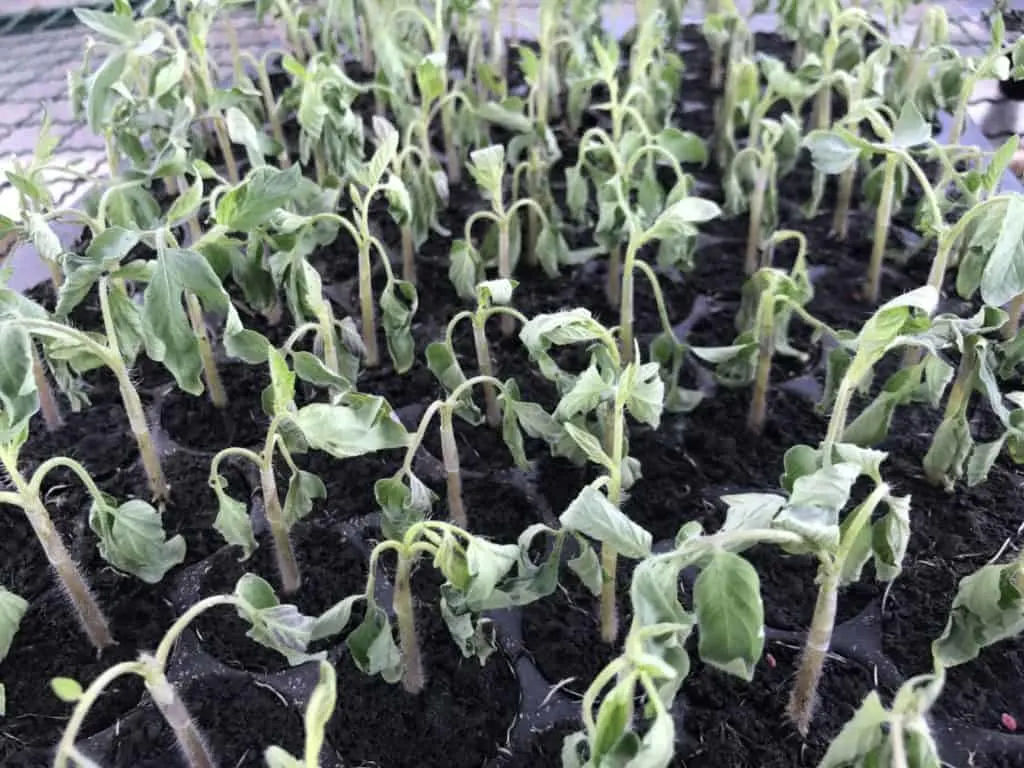
How to Fix: Tomato seedlings are very forgiving. Make sure to have them on a regular watering schedule which allows them to be in moist soil that is not completely wet most of the time. The little guys should be fine.
4. Your Tomato Seedlings Turned Purple
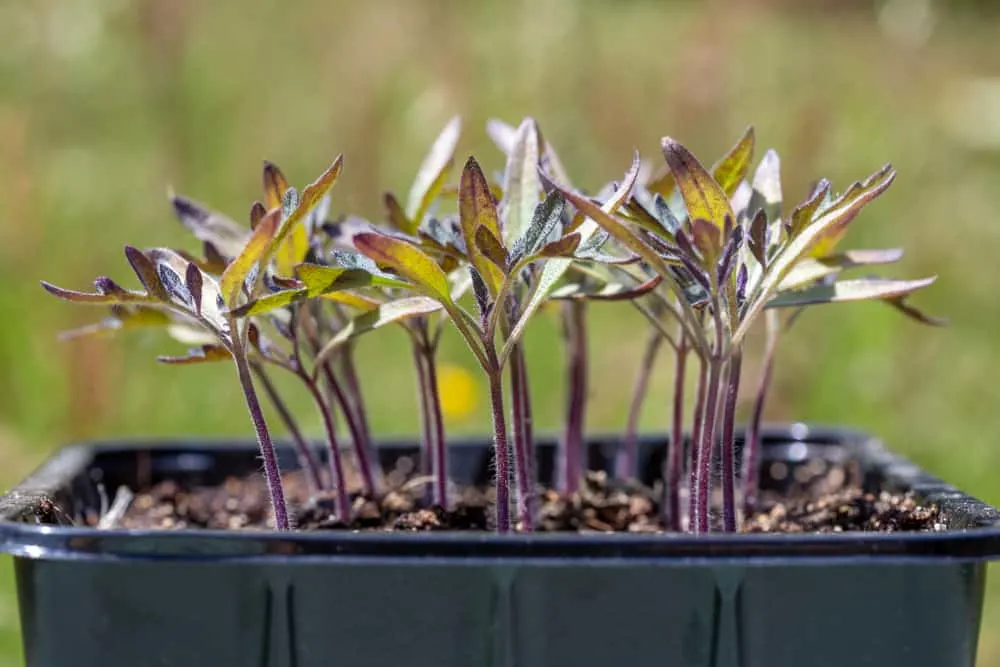
Probable Cause: It is pretty normal for tomato seedlings to have a purple tinge to their stems and veins, especially as they get closer to being ready to transplant. I think that some varieties exhibit this more than others, but that may just be an impression. Purple seedlings could possibly be a sign of a nutrient deficiency in the seedlings.
How to Prevent: Most likely, it is not necessary to prevent seedlings turning purple. In general, when you plant out the seedling transplants, the plants will have access to more nutrients. You might also add extra nice things at transplanting time such as a root and bloom fertilizer or some bone meal which will have the necessary phosphorus that the seedlings might be ready for.
How to Fix: As this is probably nothing to worry about, watchful waiting and following healthy plantlet protocols should be sufficient.
5. Your Tomato Seedlings Develop Brown Leaves / Brown Spots
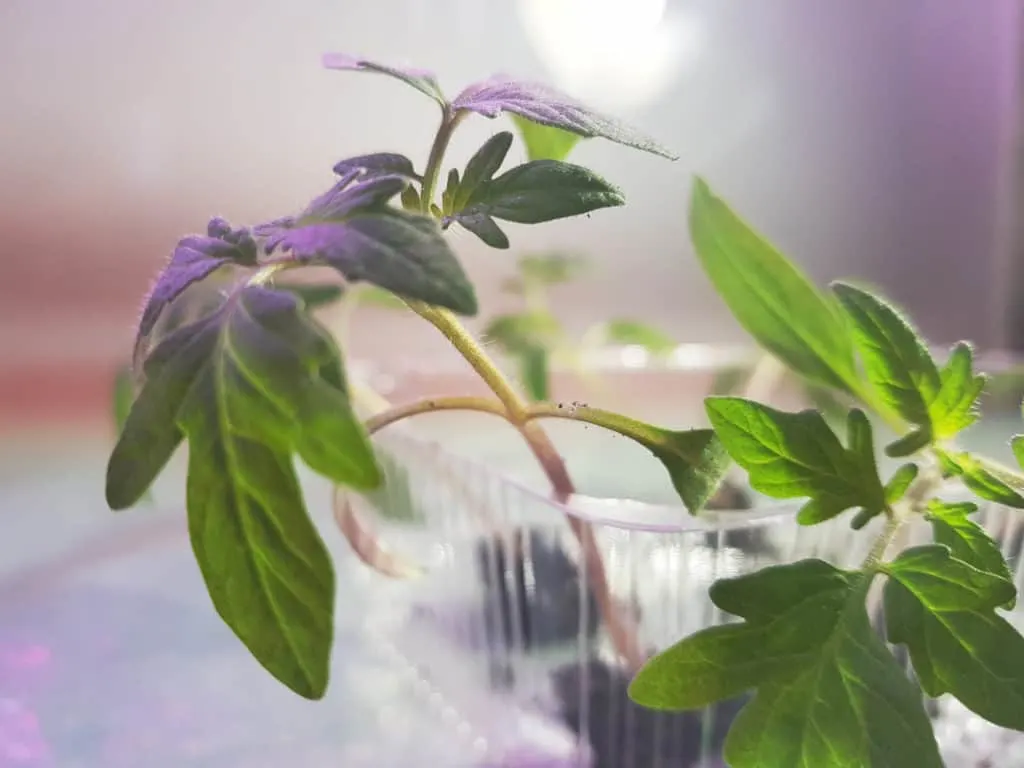
Probable Causes:
- The little plants may have become dried out or overwatered to the point that the leaves have essentially died. In general, this will start at the leaf margins rather than from the stem and leaf surface.
- The tomato seedlings may have contracted a soil-born disease, bacterial, or fungal infection. Very generally, you may see damage in the stem and leaf surface.
How to Prevent:
- Once seedlings emerge, allow the soil surface to become slightly dry between watering. Ensure there is appropriate air circulation, particularly in humid conditions.
- Start seedlings in clean, sterile containers and use sterile potting soil.
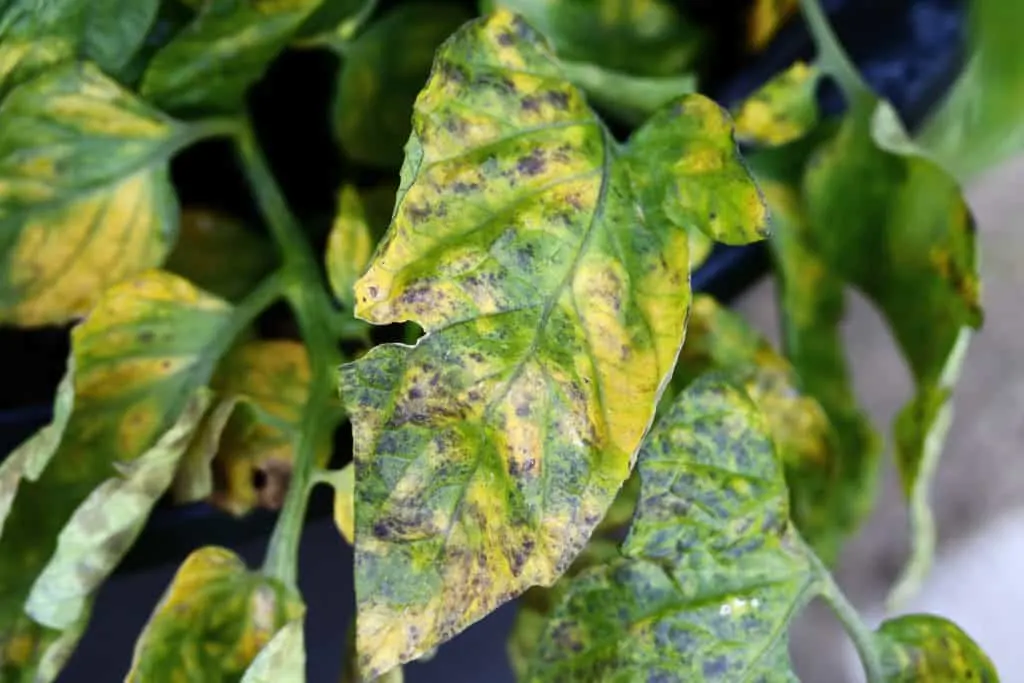
How to Fix: It depends on the severity of the injury. If the whole stem is brown and no longer looks viable, it is unlikely the tomato plant can come back from that. If there is some mottling or browning at the leaf edges, remove those leaves and get on a consistent watering schedule. If the time is right, try repotting into fresh, sterile potting soil with excellent drainage.
6. Your Tomato Seedlings are Growing Very Slowly
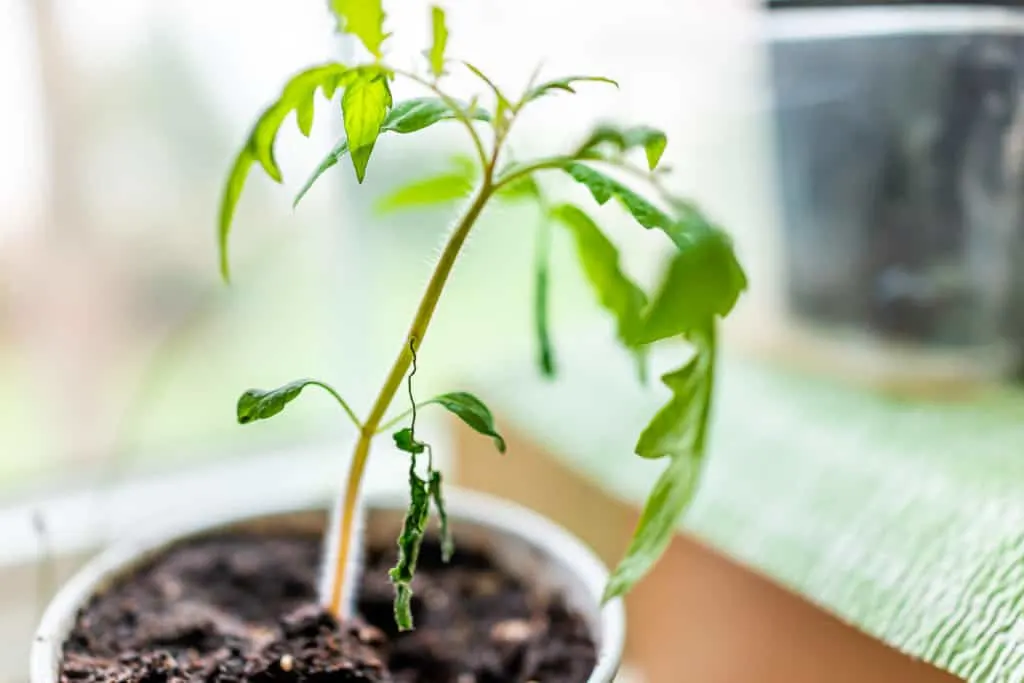
Probable Cause: There is not enough warmth in the soil for the seedlings to grow.
How to Prevent: Even with all the best soil conditions and light, tomatoes need warm soil temperatures. Plan on germinating tomato seeds at 70° to 80° F (21° to 26° C). It can cool down a bit once they have sprouted. It is best to grow your tomato seedlings where it is about 65° F (18° C).
How to Fix: Try providing extra warmth for the soil. A warm mist spray can help get things started. We’re not cooking tomato plants, please. Try putting the seed trays in a warmer location. They will love warmth from underneath. There are heat mats for placing under seed trays that work wonders for maintaining consistent warm soil temperatures.
7. Your Tomato Seedlings Have Developed White Leaves
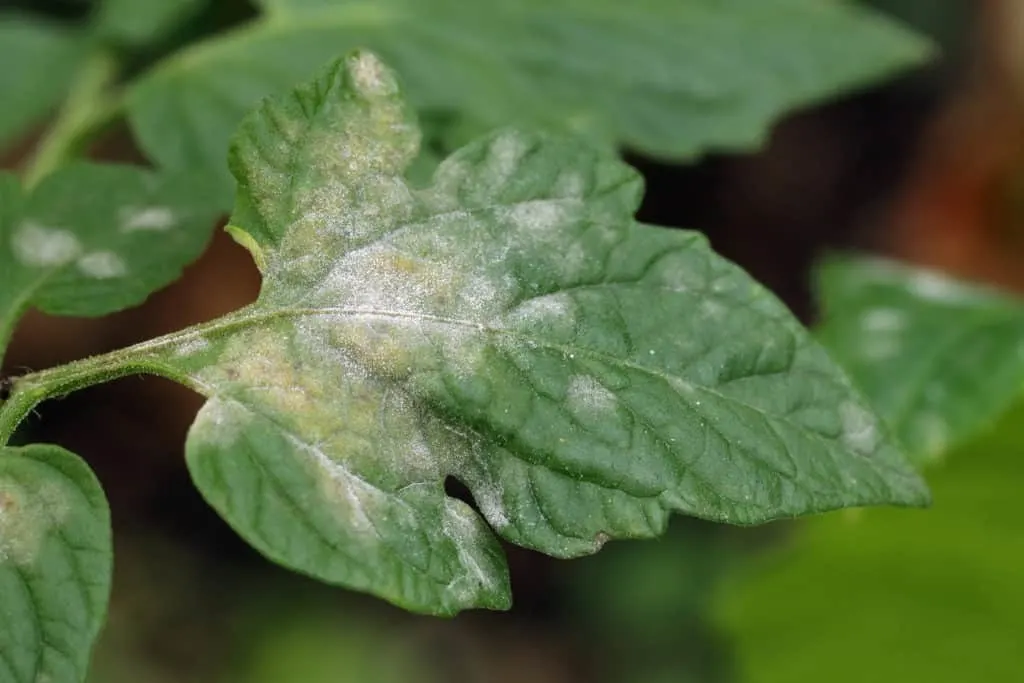
Probable Cause:
- Sunscald may turn young tomato leaves white.
- A bacterial or fungal disease may coat tomato leaves white or give them white spots.
How to Prevent:
- Slowly introduce seedlings to sunlight during the hardening off process by putting them in dappled sun with just a few hours of full sun initially. Be aware of reflected sunlight that can be intense at different times of day.
- Ensure excellent air circulation, well-draining soil, sterile seed starting mix and sterile containers.
How to Fix:
- Spray leaves with a fine mist spray of water to cool them down and protect them from intense sunlight. Gradually introduce the plants to more and more sunlight as the grow. There are plant sunscreens available if intense sunlight is unavoidable for your young tomato plants.
- Remove damaged plants or plant parts. Repot into sterile containers and ensure sterile conditions. Encourage excellent drainage and air circulation.
8. Your Tomato Seedlings Emerged, Wilted and Died.
Probable Cause: Seedling Disease, AKA Damping-off. This can happen to young tomato seedlings soon after emerging or can stop them from emerging altogether. It is a fungal problem of soil that is too rich, too wet, and too cold.
How to Prevent: Start seeds indoors in sterile potting soil that is light and fluffy, not over wet, and nice and warm, over 70° F (21° C). Avoid nitrogen fertilizer until after true leaves emerge. Allow soil surface to dry out slightly between watering.
How to Fix: Unfortunately, it is difficult to come back from damping-off disease. Surviving plants will have weaker, injured stems. It is possible that the surviving plant may harbor the fungus and leave it in the soil for future plants. It may be best to cut your losses and try again in warmer, drier conditions.
Tomato plants are incredibly resilient. If they show you there is a problem, you can change things up for them.
Many issues that tomato seedlings have are curable. In most cases, they can continue growing and have a successful life of providing you with delicious, yummy tomatoes when they grow up.
